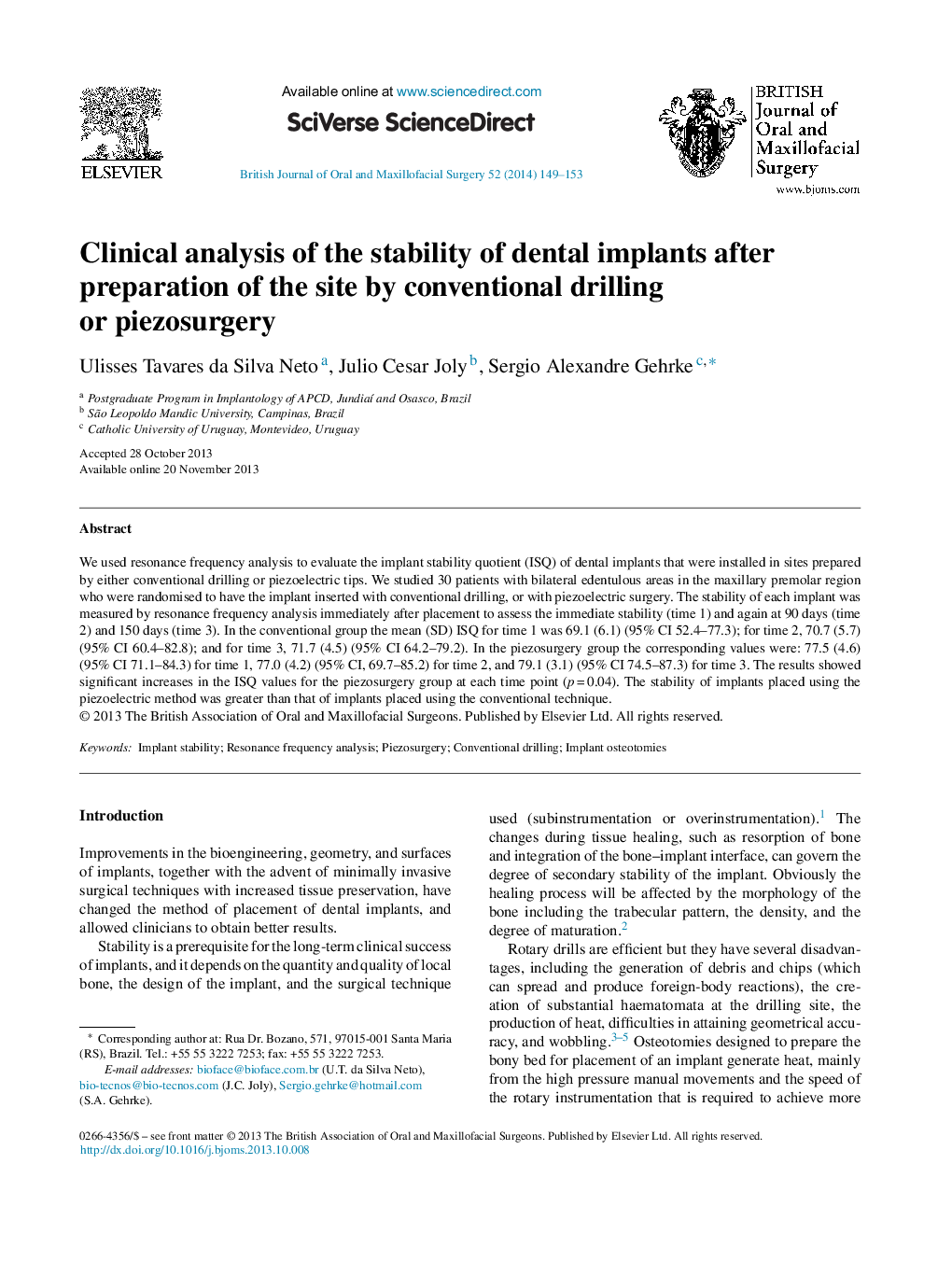| Article ID | Journal | Published Year | Pages | File Type |
|---|---|---|---|---|
| 3123924 | British Journal of Oral and Maxillofacial Surgery | 2014 | 5 Pages |
We used resonance frequency analysis to evaluate the implant stability quotient (ISQ) of dental implants that were installed in sites prepared by either conventional drilling or piezoelectric tips. We studied 30 patients with bilateral edentulous areas in the maxillary premolar region who were randomised to have the implant inserted with conventional drilling, or with piezoelectric surgery. The stability of each implant was measured by resonance frequency analysis immediately after placement to assess the immediate stability (time 1) and again at 90 days (time 2) and 150 days (time 3). In the conventional group the mean (SD) ISQ for time 1 was 69.1 (6.1) (95% CI 52.4–77.3); for time 2, 70.7 (5.7) (95% CI 60.4–82.8); and for time 3, 71.7 (4.5) (95% CI 64.2–79.2). In the piezosurgery group the corresponding values were: 77.5 (4.6) (95% CI 71.1–84.3) for time 1, 77.0 (4.2) (95% CI, 69.7–85.2) for time 2, and 79.1 (3.1) (95% CI 74.5–87.3) for time 3. The results showed significant increases in the ISQ values for the piezosurgery group at each time point (p = 0.04). The stability of implants placed using the piezoelectric method was greater than that of implants placed using the conventional technique.
